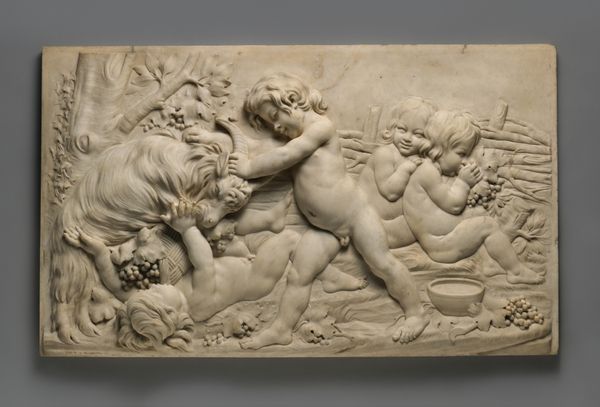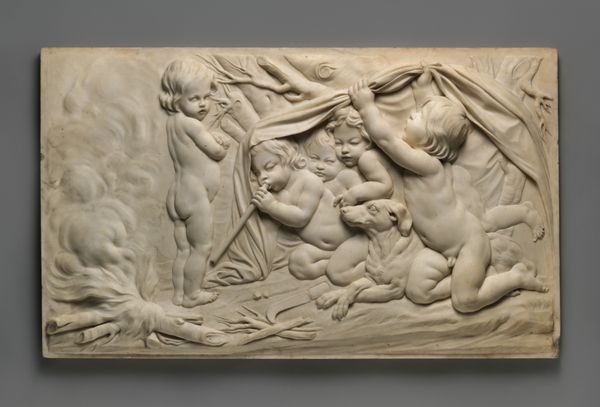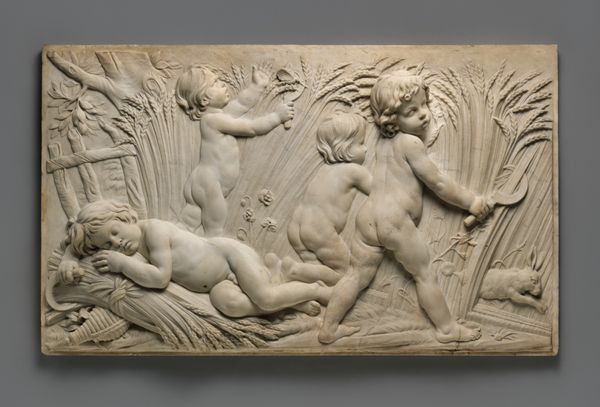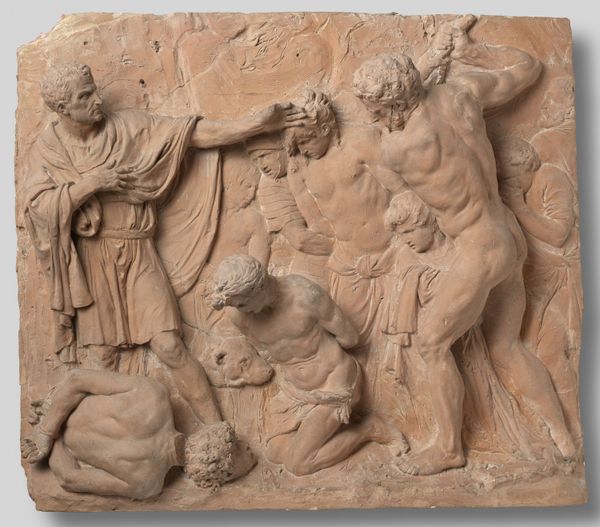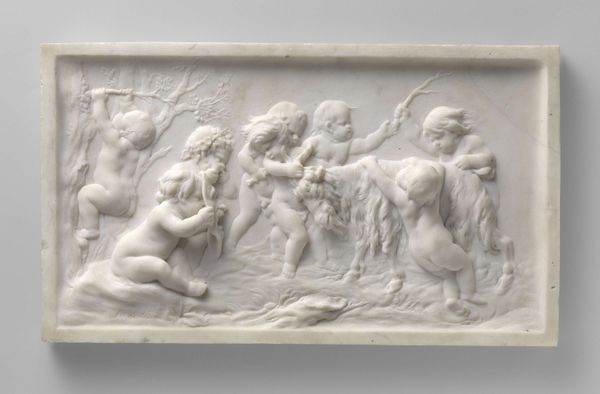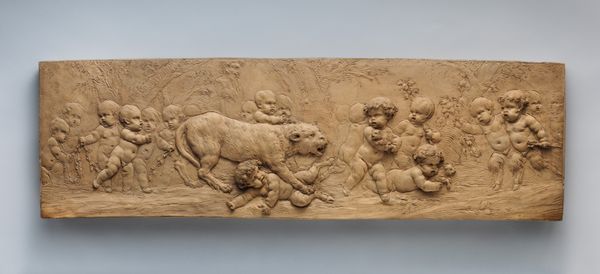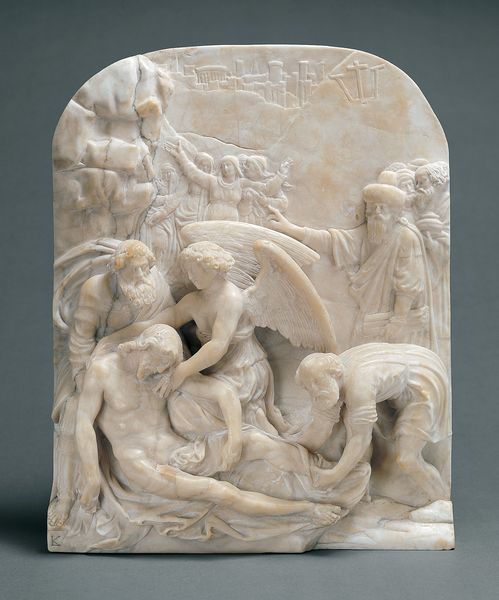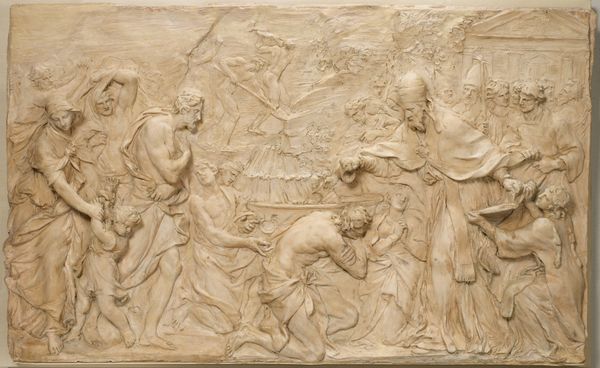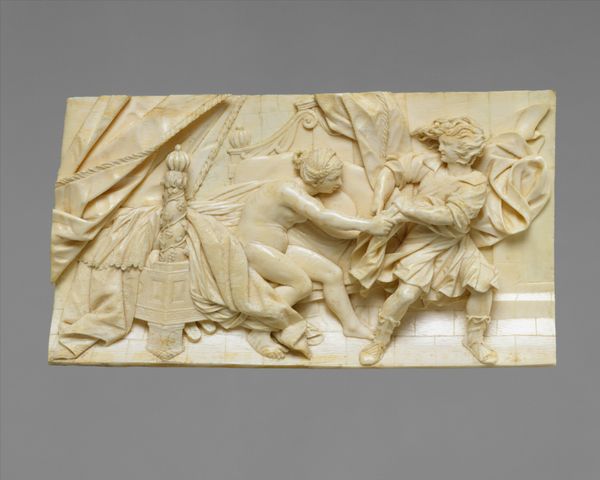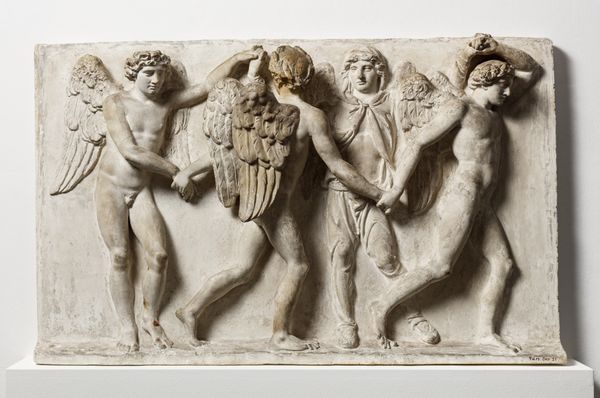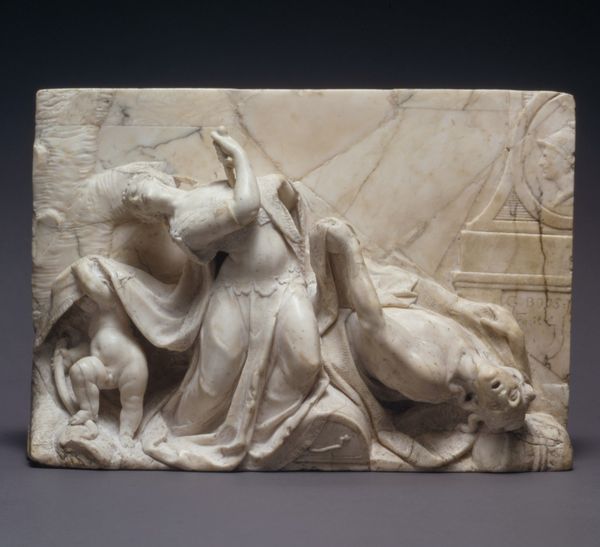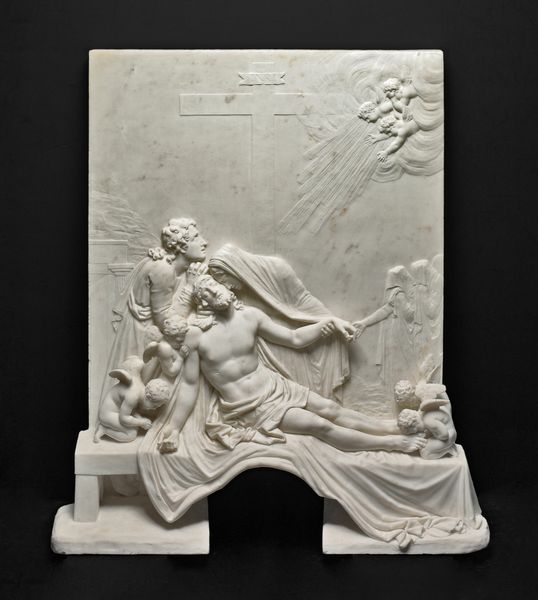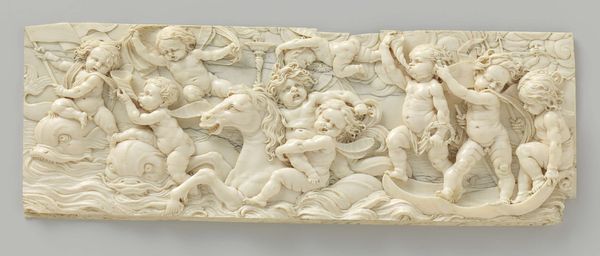
relief, sculpture, marble
#
stone
#
sculpture
#
relief
#
figuration
#
sculpture
#
genre-painting
#
decorative-art
#
marble
#
rococo
Dimensions: Overall (confirmed): 20 1/4 × 33 3/4 × 3 1/2 in., 84 lb. (51.4 × 85.7 × 8.9 cm, 38.1 kg)
Copyright: Public Domain
Editor: So, here we have Edme Bouchardon's marble relief, "Spring," part of a set created sometime between 1730 and 1765. The composition and figures seem so playful and idyllic, but it strikes me how much labor must have gone into carving all this detail out of solid stone. What can you tell me about this work? Curator: Considering the Rococo period in which Bouchardon worked, this piece is more than just decorative; it’s indicative of the societal demand for luxury goods and refined craftsmanship. Marble was a precious material. We need to ask, who commissioned this? For what purpose? Its very existence speaks to power structures and the allocation of resources. Editor: So, the value wasn't necessarily in the artistic expression itself, but in the demonstration of wealth and status? Curator: Precisely. And look closely at the carving. Think of the hours dedicated by skilled artisans - possibly even enslaved - to realize Bouchardon's vision. The material itself—marble—is also interesting. It had to be quarried, transported. Each stage signifies labor. Do you notice any contrast between the smoothness of the figures and the texture of the landscape? Editor: Now that you point it out, there is quite a stark difference! So the artist might be directing our eyes to the difference in what required less labor versus what was more meticulously labored? The skin looks very polished versus the foliage. Curator: Exactly. The smooth surface suggests accessibility, something tangible and graspable by the viewer, contrasting to the raw extraction and manufacture from source. Editor: I never considered that so much meaning could be derived just from the materials and the way they were handled! It makes me appreciate not just the image, but the hands that shaped it. Curator: Yes, this analysis reminds us that art objects are also products of material culture and social relationships.
Comments
No comments
Be the first to comment and join the conversation on the ultimate creative platform.
